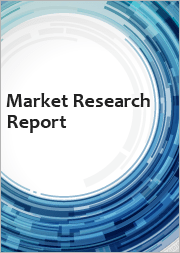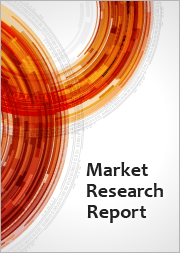
|
시장보고서
상품코드
1725134
세계의 농업용 증강현실(AR) 시장 예측(-2032년) : 컴퍼넌트별, 전개 모드별, 기술별, 용도별, 최종 사용자별, 지역별 분석Augmented Reality in Agriculture Market Forecasts to 2032 - Global Analysis By Component (Hardware, Software and Services), Deployment Mode, Technology, Application, End User and By Geography |
||||||
Stratistics MRC에 따르면 세계의 농업용 증강현실(AR) 시장은 2025년 30억 9,000만 달러를 차지하며, 예측 기간 동안 CAGR 32.9%로 성장해 2032년에는 226억 달러에 이를 것으로 예측됩니다. 농업용 증강현실(AR)은 의사결정, 생산성, 효율을 높이기 위해 현실의 농업 환경에 디지털 정보를 통합하는 것을 가리킵니다. AR는 농업의 훈련, 감시, 지도에 도움이 되고 자원의 낭비를 줄이고 수율을 향상시킵니다.
정밀 농업 수요
정밀농업에 대한 수요가 높아지면서 농업에서 증강현실(AR)의 채용을 뒷받침하고 있습니다. 이 통합은 보다 정확한 의사 결정, 효율적인 자원 관리 및 운영 비용 절감을 가능하게 합니다.
높은 초기 비용
농업의 증강현실(AR) 기술과 관련된 높은 초기 비용은 특히 중소규모의 농장에서의 채용을 제한하고 시장 성장을 방해합니다. 그 결과 잠재적인 사용자의 대부분이 AR 솔루션의 도입을 지연시키거나 보류할 수 있고, 전체적인 보급이 지연되고, 작물 관리의 개선이나 정밀 농업의 잠재적인 이점이 제한됩니다.
스마트 농업 기술 채용 증가
스마트 농업 기술의 채용이 증가하고 있으며, 정확성, 효율성, 의사결정을 강화함으로써 농업에서 증강현실(AR) 시장을 적극적으로 견인하고 있습니다. 이 시너지 효과는 생산성을 향상시키고 자원 낭비를 줄여줍니다.
데이터 프라이버시 및 보안 우려
데이터의 프라이버시와 보안에 대한 우려는 농업의 증강현실(AR) 시장에 큰 장애물이 되고 있습니다. AR 플랫폼과 관련된 사이버 보안 위험은 데이터 유출과 무단 액세스로 이어질 수 있습니다.
COVID-19의 영향
COVID-19의 대유행은 농업에 있어서 증강현실(AR)의 채용을 가속시켰습니다. 또한, 비접촉식 솔루션에 대한 수요가 증가함에 따라 AR 기술에 대한 투자를 뒷받침했습니다.
작물 모니터링 분야는 예측 기간 동안 최대가 될 전망
AR을 탑재한 작물 모니터링 툴에 의해 농가는 작물의 건강 상태를 시각화하여, 질병을 조기에 발견해, 관개나 시비의 방법을 최적화할 수 있기 때문에 작물 모니터링 분야는 예측 기간중 최대 시장 점유율을 차지할 것으로 예측됩니다.
농학자 부문은 예측 기간 중 가장 높은 CAGR이 예상된다.
예측 기간 동안, 농학자는 작물의 건강 상태, 토양 상태, 해충 관리에 관한 데이터 주도의 인사이트를 실시간으로 제공할 수 있어 농가의 의사 결정을 강화할 수 있기 때문에 농학자 부문은 가장 높은 성장률을 나타낼 것으로 예측됩니다.
최대 점유율 지역:
예측 기간 동안 아시아태평양은 농법의 진보로 최대 시장 점유율을 차지할 것으로 예측됩니다. 또한 AR은 해충 검출, 관개 최적화, 공급망 관리에도 도움이 되며 수익성과 경영 효율을 높이면서 지속 가능한 농업에 대한 이 지역 수요 증가에 대응할 수 있습니다.
CAGR이 가장 높은 지역:
예측기간 중 북미지역이 가장 높은 CAGR을 나타낼 것으로 예측됩니다. 스마트폰 앱과 스마트 글라스와 같은 AR 기반 리소스는 작업 효율과 교육을 향상시킵니다.
사용자 정의 무료 제공:
이 보고서를 구독하는 고객은 다음 무료 맞춤설정 옵션 중 하나를 사용할 수 있습니다.
- 기업 프로파일
- 추가 시장 기업의 종합적 프로파일링(3개사까지)
- 주요 기업의 SWOT 분석(3개사까지)
- 지역 세분화
- 고객의 관심에 응한 주요국 시장 추계 및 예측, CAGR(주: 타당성 확인에 따름)
- 경쟁 벤치마킹
- 제품 포트폴리오, 지리적 존재, 전략적 제휴에 기반한 주요 기업 벤치마킹
목차
제1장 주요 요약
제2장 서문
- 개요
- 이해관계자
- 조사 범위
- 조사 방법
- 데이터 마이닝
- 데이터 분석
- 데이터 검증
- 조사 접근
- 조사 자료
- 1차 조사 자료
- 2차 조사 정보원
- 전제조건
제3장 시장 동향 분석
- 성장 촉진요인
- 억제요인
- 기회
- 위협
- 기술 분석
- 용도 분석
- 최종 사용자 분석
- 신흥 시장
- COVID-19의 영향
제4장 Porter's Five Forces 분석
- 공급기업의 협상력
- 구매자의 협상력
- 대체품의 위협
- 신규 참가업체의 위협
- 경쟁 기업간 경쟁 관계
제5장 세계의 농업용 증강현실(AR) 시장 : 컴포넌트별
- 하드웨어
- 소프트웨어
- 서비스
제6장 세계의 농업용 증강현실(AR) 시장 : 전개 모드별
- On-Premise
- 클라우드 기반
제7장 세계의 농업용 증강현실 : 기술별
- 마커 기반 AR
- 마커리스 AR
- 투영 기반 AR
- 합성 기반 AR
제8장 세계의 농업용 증강현실(AR) 시장 : 용도별
- 정밀농업
- 가축 모니터링
- 스마트 온실
- 관개 관리
- 작물 모니터링
- 농장 경영
- 기타 용도
제9장 세계 농업의 증강현실 시장 : 최종 사용자별
- 농민
- 농학자
- 농업 기기 제조업체
- 연구기관
- 기타 최종 사용자
제10장 세계의 농업용 증강현실 : 지역별
- 북미
- 미국
- 캐나다
- 멕시코
- 유럽
- 독일
- 영국
- 이탈리아
- 프랑스
- 스페인
- 기타 유럽
- 아시아태평양
- 일본
- 중국
- 인도
- 호주
- 뉴질랜드
- 한국
- 기타 아시아태평양
- 남미
- 아르헨티나
- 브라질
- 칠레
- 기타 남미
- 중동 및 아프리카
- 사우디아라비아
- 아랍에미리트(UAE)
- 카타르
- 남아프리카
- 기타 중동 및 아프리카
제11장 주요 발전
- 계약, 파트너십, 협업, 합작투자
- 인수와 합병
- 신제품 발매
- 사업 확대
- 기타 주요 전략
제12장 기업 프로파일링
- Trimble Inc.
- Raven Industries
- AG Leader Technology
- Deere & Company
- CLAAS Group
- Topcon Positioning Systems
- Augmenta
- Kubota Corporation
- BASF Digital Farming GmbH
- CropX
- AgEagle Aerial Systems
- Taranis
- Ecorobotix
- Gamaya
- Sentera
- Augmentir
- Microsoft
- Syngenta
- Prospera Technologies
- VineView
According to Stratistics MRC, the Global Augmented Reality in Agriculture Market is accounted for $3.09 billion in 2025 and is expected to reach $22.6 billion by 2032 growing at a CAGR of 32.9% during the forecast period. Augmented Reality (AR) in agriculture refers to the integration of digital information with the real-world farming environment to enhance decision-making, productivity, and efficiency. By overlaying data such as crop health, soil conditions, weather forecasts, and equipment status onto a farmer's view through AR glasses or mobile devices, it enables real-time insights and precision farming. AR helps in training, monitoring, and guiding agricultural operations, reducing resource wastage and improving yields. This technology transforms traditional farming by providing interactive and intuitive tools that support sustainable practices, streamline workflows, and empower farmers with actionable information directly in the field.
Market Dynamics:
Driver:
Precision Farming Demand
The growing demand for precision farming is absolutely driving the adoption of augmented reality (AR) in the agriculture market. As farmers seek data-driven solutions for optimizing crop yields, AR enhances real-time visualization of soil health, weather patterns, and crop conditions. This integration enables more accurate decision-making, efficient resource management, and reduced operational costs. The synergy between AR and precision farming empowers farmers with immersive insights, ultimately boosting productivity, sustainability, and technological advancement in modern agricultural practices.
Restraint:
High Initial Costs
High initial costs associated with augmented reality (AR) technology in agriculture hinder market growth by limiting adoption, especially among small and medium-sized farms. These costs include expensive hardware, software development, and integration, which can be a significant financial barrier. As a result, many potential users may delay or forgo implementing AR solutions, slowing the overall adoption and limiting the potential benefits of improved crop management and precision farming.
Opportunity:
Rising Adoption of Smart Farming Technologies
The rising adoption of smart farming technologies is positively driving the augmented reality (AR) in agriculture market by enhancing precision, efficiency, and decision-making. AR tools, integrated with IoT and data analytics, enable real-time visualization of field conditions, crop health, and equipment diagnostics. This synergy boosts productivity and reduces resource wastage. As farmers increasingly embrace digital solutions, the demand for AR applications grows, revolutionizing traditional farming practices and creating new opportunities for innovation across the agricultural value chain.
Threat:
Data Privacy and Security Concerns
Data privacy and security concerns present a significant hindrance to the Augmented Reality (AR) in agriculture market. The collection and sharing of sensitive farm data, such as soil conditions and crop health, raise privacy issues. Cybersecurity risks related to AR platforms can lead to data breaches or unauthorized access. These concerns deter farmers and stakeholders from fully adopting AR technologies, limiting market growth and innovation in the agricultural sector.
Covid-19 Impact
The COVID-19 pandemic accelerated the adoption of Augmented Reality (AR) in agriculture, as farmers sought innovative ways to maintain operations with limited physical interactions. AR facilitated remote training, virtual consultations, and equipment maintenance, ensuring business continuity. Additionally, the increased demand for contactless solutions boosted investments in AR technologies. As a result, AR became a key tool for improving efficiency, optimizing resource use, and supporting sustainable farming practices during the pandemic.
The crop monitoring segment is expected to be the largest during the forecast period
The crop monitoring segment is expected to account for the largest market share during the forecast period, as AR-powered crop monitoring tools enable farmers to visualize crop health, detect diseases early, and optimize irrigation and fertilization practices. This results in higher yields, reduced resource wastage, and improved sustainability. The integration of AR with drones and sensors further supports efficient field analysis and proactive management. As demand for smart farming grows, crop monitoring continues to be a key contributor to AR adoption in agriculture.
The agronomists segment is expected to have the highest CAGR during the forecast period
Over the forecast period, the agronomists segment is predicted to witness the highest growth rate, because agronomists can deliver real-time, data-driven insights on crop health, soil conditions, and pest management, enhancing decision-making for farmers. Their expertise, combined with AR's visualization capabilities, improves precision farming techniques and boosts productivity. This integration accelerates the adoption of AR technologies across the agricultural sector, promoting efficiency and sustainability, and significantly contributing to the growth and innovation within the AR in agriculture market.
Region with largest share:
During the forecast period, the Asia Pacific region is expected to hold the largest market share owing to advancements in farming practices. AR enables real-time data visualization, improving crop management and precision farming techniques. Farmers can use AR for enhanced training, crop monitoring, and equipment maintenance, resulting in increased productivity and reduced resource waste. Additionally, AR aids in pest detection, irrigation optimization, and supply chain management, helping to address the region's growing demand for sustainable agriculture while boosting profitability and operational efficiency.
Region with highest CAGR:
Over the forecast period, the North America region is anticipated to exhibit the highest CAGR, because farmers can see data superimposed on real-world settings due to AR technology, which helps with soil management, crop monitoring, and pest control. With real-time information, it enhances decision-making, maximizes resource utilization, and boosts yields. AR-based resources, like smartphone apps and smart glasses, improve operational effectiveness and training. This technology development promotes sustainable practices, lowering costs and boosting North America's agricultural economy.
Key players in the market
Some of the key players profiled in the Augmented Reality in Agriculture Market include Trimble Inc., Raven Industries, AG Leader Technology, Deere & Company, CLAAS Group, Topcon Positioning Systems, Augmenta, Kubota Corporation, BASF Digital Farming GmbH, CropX, AgEagle Aerial Systems, Taranis, Ecorobotix, Gamaya, Sentera, Augmentir, Microsoft, Syngenta, Prospera Technologies and VineView.
Key Developments:
In February 2025, Microsoft and Anduril Industries announced an expanded partnership to advance the U.S. Army's Integrated Visual Augmentation System (IVAS) program. Additionally, Microsoft Azure will serve as Anduril's preferred cloud platform for all IVAS and Anduril AI technologies.
In January 2025, In January 2025, Microsoft and OpenAI announced an evolution of their strategic partnership, focusing on the next phase of AI development. Key elements of their 2019 agreement remain intact through 2030, including Microsoft's rights to OpenAI's intellectual property for integration into products like Copilot, exclusivity of the OpenAI API on Azure, and mutual revenue-sharing arrangements.
In June 2024, Hitachi and Microsoft announced a significant three-year strategic partnership aimed at accelerating business and social innovation through generative AI. This collaboration is projected to be worth several billion dollars and focuses on leveraging AI technologies to drive transformation across various industries.
Components Covered:
- Hardware
- Software
- Services
Deployment Modes Covered:
- On-Premises
- Cloud-Based
Technologies Covered:
- Marker-based AR
- Markerless AR
- Projection-based AR
- Superimposition-based AR
Applications Covered:
- Precision Farming
- Livestock Monitoring
- Smart Greenhouses
- Irrigation Management
- Crop Monitoring
- Farm Management
- Other Applications
End Users Covered:
- Farmers
- Agronomists
- Agriculture Equipment Manufacturers
- Research Institutions
- Other End Users
Regions Covered:
- North America
- US
- Canada
- Mexico
- Europe
- Germany
- UK
- Italy
- France
- Spain
- Rest of Europe
- Asia Pacific
- Japan
- China
- India
- Australia
- New Zealand
- South Korea
- Rest of Asia Pacific
- South America
- Argentina
- Brazil
- Chile
- Rest of South America
- Middle East & Africa
- Saudi Arabia
- UAE
- Qatar
- South Africa
- Rest of Middle East & Africa
What our report offers:
- Market share assessments for the regional and country-level segments
- Strategic recommendations for the new entrants
- Covers Market data for the years 2022, 2023, 2024, 2026, and 2030
- Market Trends (Drivers, Constraints, Opportunities, Threats, Challenges, Investment Opportunities, and recommendations)
- Strategic recommendations in key business segments based on the market estimations
- Competitive landscaping mapping the key common trends
- Company profiling with detailed strategies, financials, and recent developments
- Supply chain trends mapping the latest technological advancements
Free Customization Offerings:
All the customers of this report will be entitled to receive one of the following free customization options:
- Company Profiling
- Comprehensive profiling of additional market players (up to 3)
- SWOT Analysis of key players (up to 3)
- Regional Segmentation
- Market estimations, Forecasts and CAGR of any prominent country as per the client's interest (Note: Depends on feasibility check)
- Competitive Benchmarking
- Benchmarking of key players based on product portfolio, geographical presence, and strategic alliances
Table of Contents
1 Executive Summary
2 Preface
- 2.1 Abstract
- 2.2 Stake Holders
- 2.3 Research Scope
- 2.4 Research Methodology
- 2.4.1 Data Mining
- 2.4.2 Data Analysis
- 2.4.3 Data Validation
- 2.4.4 Research Approach
- 2.5 Research Sources
- 2.5.1 Primary Research Sources
- 2.5.2 Secondary Research Sources
- 2.5.3 Assumptions
3 Market Trend Analysis
- 3.1 Introduction
- 3.2 Drivers
- 3.3 Restraints
- 3.4 Opportunities
- 3.5 Threats
- 3.6 Technology Analysis
- 3.7 Application Analysis
- 3.8 End User Analysis
- 3.9 Emerging Markets
- 3.10 Impact of Covid-19
4 Porters Five Force Analysis
- 4.1 Bargaining power of suppliers
- 4.2 Bargaining power of buyers
- 4.3 Threat of substitutes
- 4.4 Threat of new entrants
- 4.5 Competitive rivalry
5 Global Augmented Reality in Agriculture Market, By Component
- 5.1 Introduction
- 5.2 Hardware
- 5.3 Software
- 5.4 Services
6 Global Augmented Reality in Agriculture Market, By Deployment Mode
- 6.1 Introduction
- 6.2 On-Premises
- 6.3 Cloud-Based
7 Global Augmented Reality in Agriculture Market, By Technology
- 7.1 Introduction
- 7.2 Marker-based AR
- 7.3 Markerless AR
- 7.4 Projection-based AR
- 7.5 Superimposition-based AR
8 Global Augmented Reality in Agriculture Market, By Application
- 8.1 Introduction
- 8.2 Precision Farming
- 8.3 Livestock Monitoring
- 8.4 Smart Greenhouses
- 8.5 Irrigation Management
- 8.6 Crop Monitoring
- 8.7 Farm Management
- 8.8 Other Applications
9 Global Augmented Reality in Agriculture Market, By End User
- 9.1 Introduction
- 9.2 Farmers
- 9.3 Agronomists
- 9.4 Agriculture Equipment Manufacturers
- 9.5 Research Institutions
- 9.6 Other End Users
10 Global Augmented Reality in Agriculture Market, By Geography
- 10.1 Introduction
- 10.2 North America
- 10.2.1 US
- 10.2.2 Canada
- 10.2.3 Mexico
- 10.3 Europe
- 10.3.1 Germany
- 10.3.2 UK
- 10.3.3 Italy
- 10.3.4 France
- 10.3.5 Spain
- 10.3.6 Rest of Europe
- 10.4 Asia Pacific
- 10.4.1 Japan
- 10.4.2 China
- 10.4.3 India
- 10.4.4 Australia
- 10.4.5 New Zealand
- 10.4.6 South Korea
- 10.4.7 Rest of Asia Pacific
- 10.5 South America
- 10.5.1 Argentina
- 10.5.2 Brazil
- 10.5.3 Chile
- 10.5.4 Rest of South America
- 10.6 Middle East & Africa
- 10.6.1 Saudi Arabia
- 10.6.2 UAE
- 10.6.3 Qatar
- 10.6.4 South Africa
- 10.6.5 Rest of Middle East & Africa
11 Key Developments
- 11.1 Agreements, Partnerships, Collaborations and Joint Ventures
- 11.2 Acquisitions & Mergers
- 11.3 New Product Launch
- 11.4 Expansions
- 11.5 Other Key Strategies
12 Company Profiling
- 12.1 Trimble Inc.
- 12.2 Raven Industries
- 12.3 AG Leader Technology
- 12.4 Deere & Company
- 12.5 CLAAS Group
- 12.6 Topcon Positioning Systems
- 12.7 Augmenta
- 12.8 Kubota Corporation
- 12.9 BASF Digital Farming GmbH
- 12.10 CropX
- 12.11 AgEagle Aerial Systems
- 12.12 Taranis
- 12.13 Ecorobotix
- 12.14 Gamaya
- 12.15 Sentera
- 12.16 Augmentir
- 12.17 Microsoft
- 12.18 Syngenta
- 12.19 Prospera Technologies
- 12.20 VineView



















